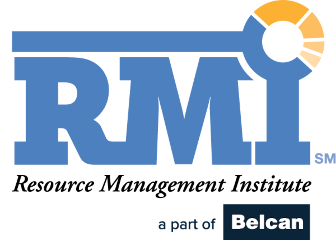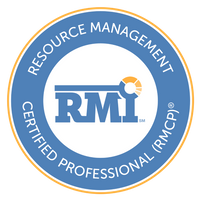Effective resource management requires continual iteration and optimization for companies to make the most of their workforce. Using a strategy known as Full-Cycle Resource Management, businesses are able to better understand and improve resource utilization, no matter the industry they operate in.
There are four phases within Full-Cycle Resource Management: Estimate, Plan, Deliver, and Analyze and Optimize. These phases naturally lead into and support the next in a continual loop designed to steadily improve resource management through helpful insights and refined processes. An Operational System of Record (OSR) is a centralized management solution that unifies core resource management, project delivery, collaboration, project accounting, and analysis systems for more effective planning and execution across the span of concurrent projects, at various lifecycle stages, within a given services organization.
With these capabilities, an OSR can support and integrate the four phases of Full-Cycle Resource Management and their related processes in a single comprehensive ecosystem so that your business can make this concept a reality.
Phase 1: Estimate
Estimation begins before a project commences to determine the resources and billing rates necessary for success. Once the project’s requirements are determined and approved by a client, your business can begin estimating what roles will be needed. This frees up time for project managers to plan out granular, task-level activities and be prepared for changes that could arise at any point in the project lifecycle. Starting the process early and using your pipeline to determine resource scenarios helps tighten resource forecasts and set projects up for success.
How an OSR Helps: An OSR increases the accuracy of the Estimate Phase by allowing managers to match projects with appropriate resources and see which team members will be available, what skills will be needed, and how much should be billed to the client. Having feedback from previous projects collected and analyzed in an OSR also helps managers more accurately estimate future projects by having data insights they can count on for comparison.
Phase 2: Plan
At the Plan phase, a project is almost ready to begin, but its stages, milestones, and assigned resources have not been finalized. The resource manager will review requirements and determine resources needed based on skills, roles, and availability to maximize profitability. These resources will change from soft allocation to hard allocation over the course of planning, as the confidence level increases and the project start date approaches. Making smart choices during the Plan Phase is crucial, as making resource changes or requests afterward may increase cost or have a ripple effect on other projects, leading to further costs and potential delays.
How an OSR Helps: An OSR is designed to allow comprehensive resource visibility of the businesses resource pool through a number of different lenses. A pool can include team member skills, roles, experience, geo location, division, availability, cost rates, bill rates, and more. During the Plan Phase, this pool will help you accurately match your supply of resources to your project demands for greater project and business success.
Phase 3: Deliver
During the Deliver phase, project managers break down structure, subtasks, and task timelines while resource managers stay focused on employee performance and project timelines to ensure tasks are completed on time and on budget. Strong communication and collaboration between project and resource managers is vital for ensuring allocated resource hours are being optimally used. By having resources planned prior to the beginning of delivery, it becomes much easier to track time and manage daily tasks after kickoff. Detailed tracking of your resource performance on in-progress projects ensures strategies are executed well and any project complications are dealt with swiftly.
How an OSR Helps: Tracking time and keeping weekly schedules with an OSR allows resource managers to analyze performance and utilization metrics while a project is still in progress. These metrics can then be compared against hard allocations relative to budget and timeline to determine if changes need to be made to keep the project on track. Project managers in the project are able to communicate unplanned resource needs to the resource manager in the context of the project. Informed resource changes can improve the health of the project and utilization.
Phase 4: Analyze & Optimize
The Analyze and Optimize phase creates a feedback loop that uses data and analytics to understand the success, utilization rate, and profitability of a project and then apply these insights to improve costs and client satisfaction rates. Having systems in place that collect, integrate, and analyze valuable data enables both project and resource managers to make informed, effective decisions. While this phase can be done at the end of a project to improve the success rate of the next one, with Full-Cycle Resource Management analysis is a constant, happening through the entire lifecycle of a project.
How an OSR Helps: Real-time insights are made possible through the centralization of key operational data in an OSR. Rather than having to wait until a project is completed or even having to gauge project success without any real data, an OSR allows resource managers to understand resource capacity and demand, analyze resource performance, compare metrics, and make fast decisions, regardless of the stage of the portfolio of projects across the organization.
Learn more about Full-Cycle Resource Management in “The Definitive Guide to Resource Management”

John Reese
John Reese has spent more than 20 years marketing B2B technology and SaaS businesses, ranging from Fortune 500 to early-stage companies. John brings this expertise to his role as Senior Vice President of Marketing, where he oversees Mavenlink’s marketing and growth strategies. In addition to his role at Mavenlink, John serves on the Advisory Board of the Technology Services Industry Association





